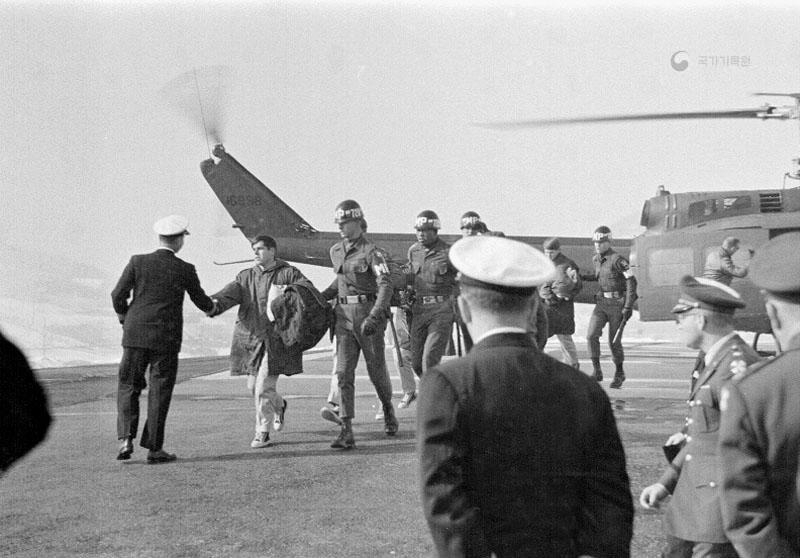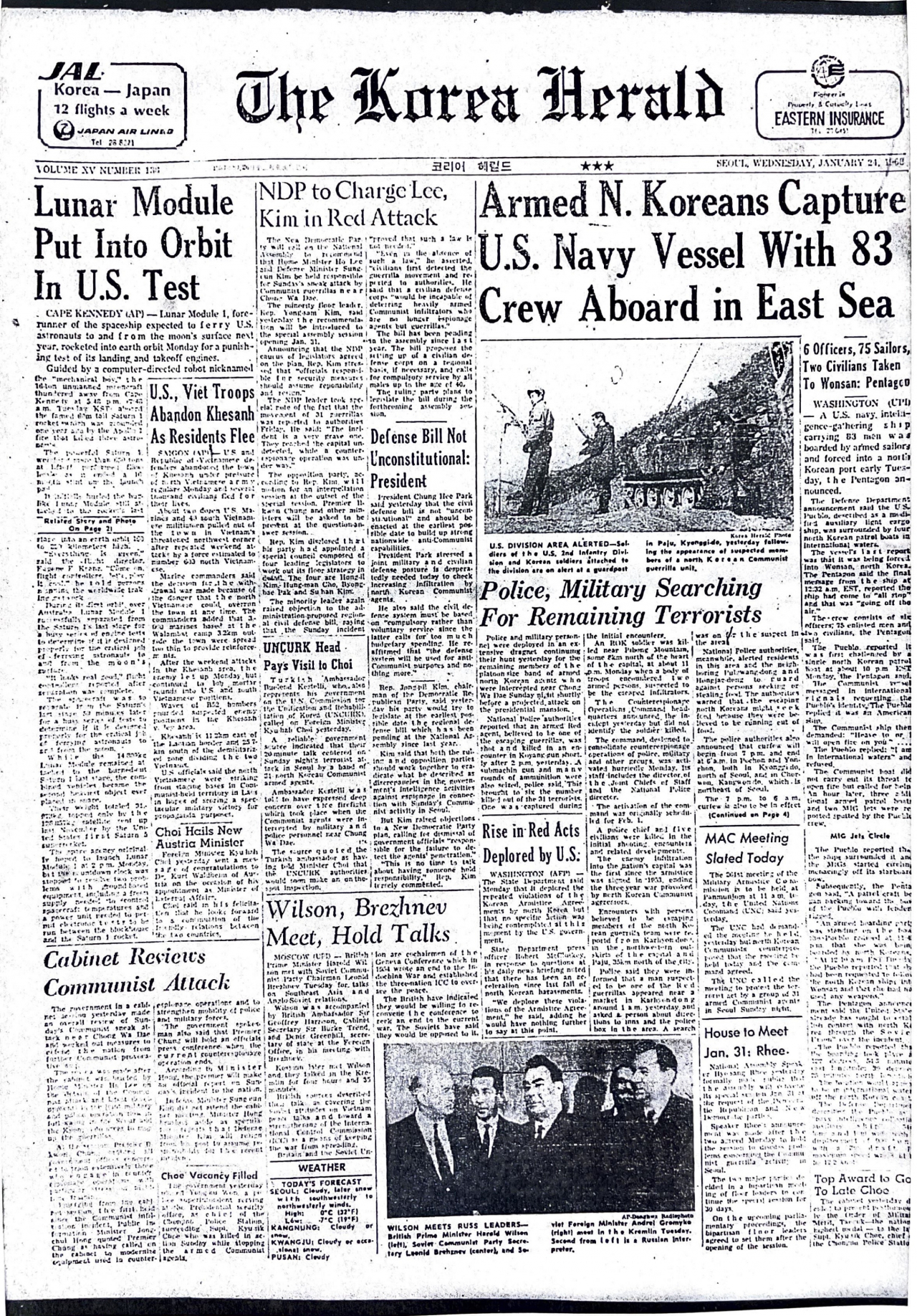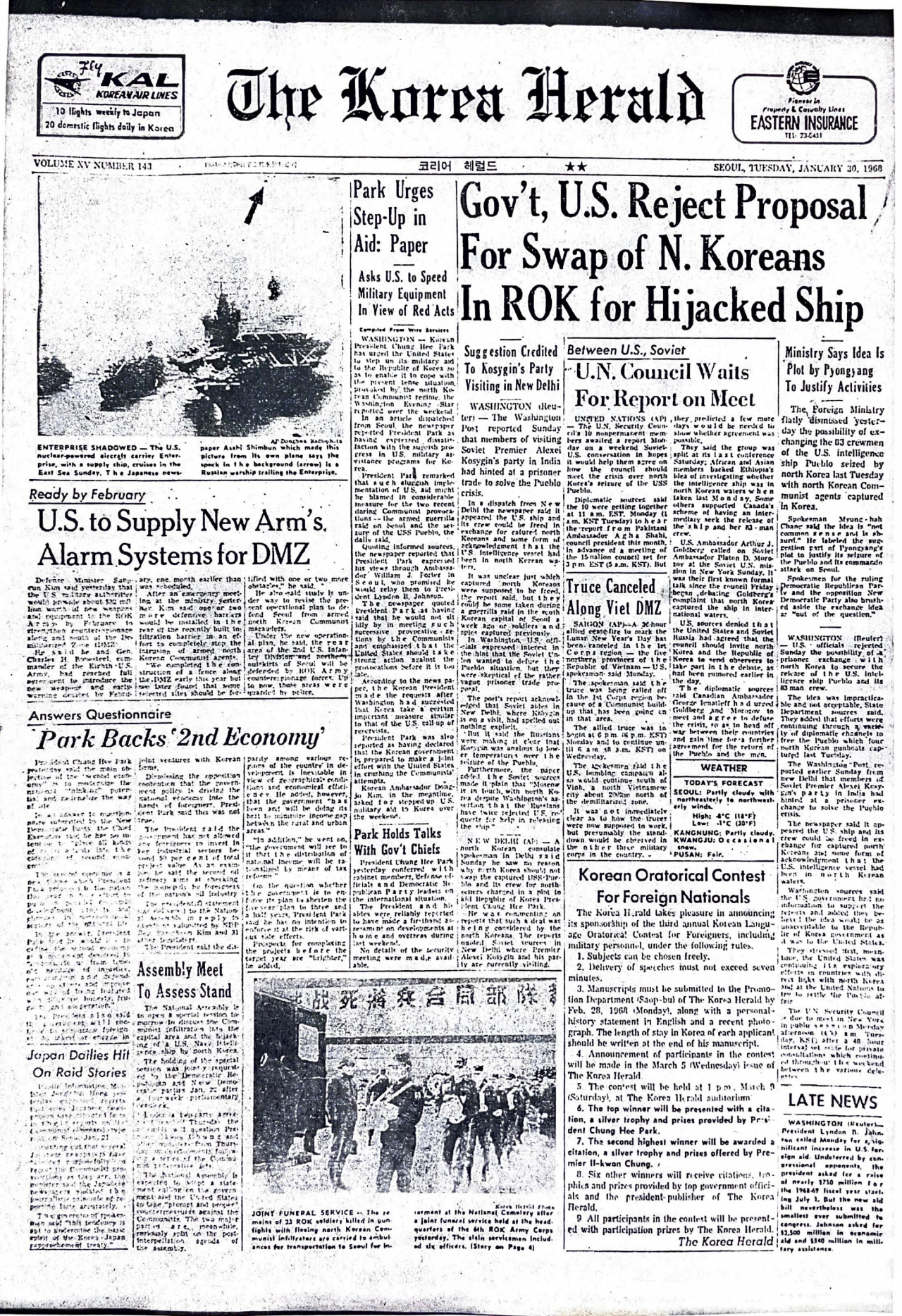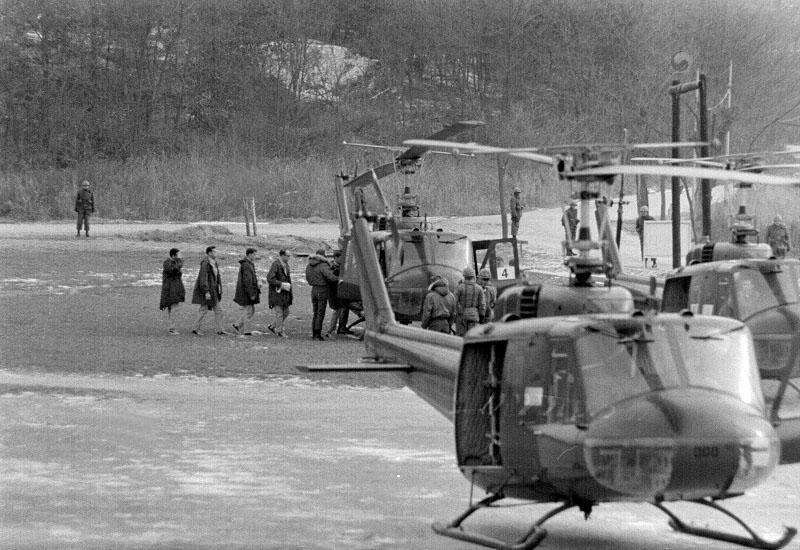[Korean History] Capture of US spy ship symbolizes US-N. Korea tensions
USS Pueblo remains only commissioned US Navy vessel currently held captive, seized by Pyongyang in daring raid during Cold War
Published : 2023-02-22 16:16:42
Deep in the heart of the North Korean capital Pyongyang, moored along the Pothong River Canal, is a US Navy ship that is featured as an exhibition of the "Victorious War Museum."
The ill-fated vessel is USS Pueblo, the only active ship on the commissioned roster of the American Navy now held captive by another country.
On Jan. 23, 1968, the world’s most powerful military was dealt an unexpected blow by the hands of a tiny communist state, when Pyongyang attacked the US Navy intelligence-gathering ship and captured it along with a crew of over 80.
To this day, North Korea boasts about the 1968 attack and holds the ship up as its shining trophy.
To the US, the “Pueblo Incident” remains a bitter memory, something it wants to find closure to.
Last month, the US House of Representatives introduced a resolution that called on North Korea to return the hull, marking 55 years since USS Pueblo and its crew were seized. The incident resulted in the death of one crew member. The 82 other survivors were kept in North Korea for 11 months before being returned home.

Daring attack on US
The incident is detailed in The Korea Herald’s top story of Jan. 24, 1968, “Armed N. Koreans capture US navy vessel with 83 crew aboard in East Sea,” which shows that six officers, 75 sailors and two civilians were taken to the port city of Wonsan, Kangwon Province, in the North Korean side of Gangwon Province.
The paper also shows that South Korea will hold Cabinet members Yi Ho and Kim Sung-eun responsible for the North’s failed assassination attempt on then-President Park Chung-hee. Just two days earlier, on Jan. 21, 1968, 33 armed North Korean infiltrators had been stopped just 300 meters from the presidential office, an indication of the hostile mood on the Korean Peninsula.
Stunned by the capture, the US dispatched the USS Enterprise aircraft carrier to the East Sea, declaring the North’s action an “act of war,” the Jan. 24 edition shows. But no major breakthrough came, as a subsequent related article in The Korea Herald five days later -- “Gov’t, US, reject proposal for swap of N. Koreans in ROK (South Korea) for hijacked ship” -- shows that Pyongyang attempted to use Pueblo as leverage in negotiations with Seoul and Washington.


North Korea and the US remain at loggerheads over who is to blame for the incident. The North to this day claims the USS Pueblo deliberately entered its territorial waters for espionage. But the US still says the vessel had been in international waters and any evidence or confessions of spy missions by the sailors had been fabricated.
The US eventually agreed to sign an apology and admission of intruding in the North’s territorial waters and conducting espionage activities, along with reassurance that it would not happen again. But the aforementioned resolution by the US Congress and Washington’s official position of denying any wrongdoings by the Pueblo shows that this was only done to acquire the freedom of the crew.
A declassified document by the US National Security Agency showed the US military had mulled various military actions, including an airstrike and raid across the Demilitarized Zone. But then-US President Lyndon B. Johnson ultimately rejected direct military engagement, and opted for the show of force with the American fleet moving to South Korea.
Another memo by the NSA, released in 2004, showed that the US had feared bringing China and the Soviet Union more directly into the situation, risking escalation of the crisis and hostility on the Korean Peninsula at the height of the Cold War. The US was still knee-deep in the Vietnam War at the time, and not even a decade had passed since the Cuban missile crisis of 1962.
The Pueblo crew remained in North Korea for 11 months until they were released on Dec. 23, 1968, and the testimonies indicate that the 336 days had been cruel on the prisoners. Stu Russell, one of the captured sailors, said in a recent CNN interview that he “could just feel” the total and complete hatred toward the Americans from the North Koreans.
Tom Massi, another crew member, told the Washington Post they were “beaten every day, humiliated, starved, just about anything you could think of” during the 11 months of imprisonment.
In 2021, a federal district court in Washington awarded $2.3 billion in damages to the Pueblo’s crew and family members in a suit against North Korea.
Aftermath
In addition to the inhumane treatment of the prisoners, a US National Security Agency report released in 2012, “The Capture of the USS Pueblo and Its Effect on SIGINT Operations,” shows that the ship’s loss resulted in a compromise of classified materials aboard the ship, along with a “rare view of the complex technology behind US cryptographic systems.”
After the Pueblo incident, the US conducted a cryptographic damage assessment that was declassified in 2006. It concluded that despite the crew’s efforts to destroy sensitive materials, they were unable to sufficiently dispose of them due to most of the crew not being familiar with cryptographic equipment.

The cryptographic technicians onboard were subject to intense interrogation by the North, although the damage report concluded that the North Koreans would have eventually understood everything without their information.
In addition, the incident handed a material for propaganda for the belligerent North Koreans, who seem determined to ensure that no one would forget the moment of its scarce victory against the Americans. Last month, Rodong Sinmun published by the North’s Workers’ Party of Korea celebrated the 55th anniversary of the USS Pueblo’s abduction, bumptiously stating that North Korea will “obliterate the territory of its enemies upon invaders.”
As the 1950-53 Korean War never officially concluded with a peace treaty, the US and North Korea remain at odds.
On Monday, the US called on the UN Security Council to act against North Korea’s recent missile provocations. The attempt yielded no result due to the opposition of two veto-wielding members, China and Russia.
Between the North’s nuclear programs, ballistic missiles, exchange of tough words and intermittent efforts on the part of Seoul and Washington to bring the communist state to the negotiation table to relieve tensions on the peninsula, relations between the US and North Korea have had their ups and downs.
But rarely has it gone as far south as that fateful night on Jan. 23, 1968, and the rusting prisoner docked in the North Korean capital is a testament to the tumultuous and complicated relationship between Washington and Pyongyang.
http://www.koreaherald.com/common/newsprint.php?ud=20230221000825